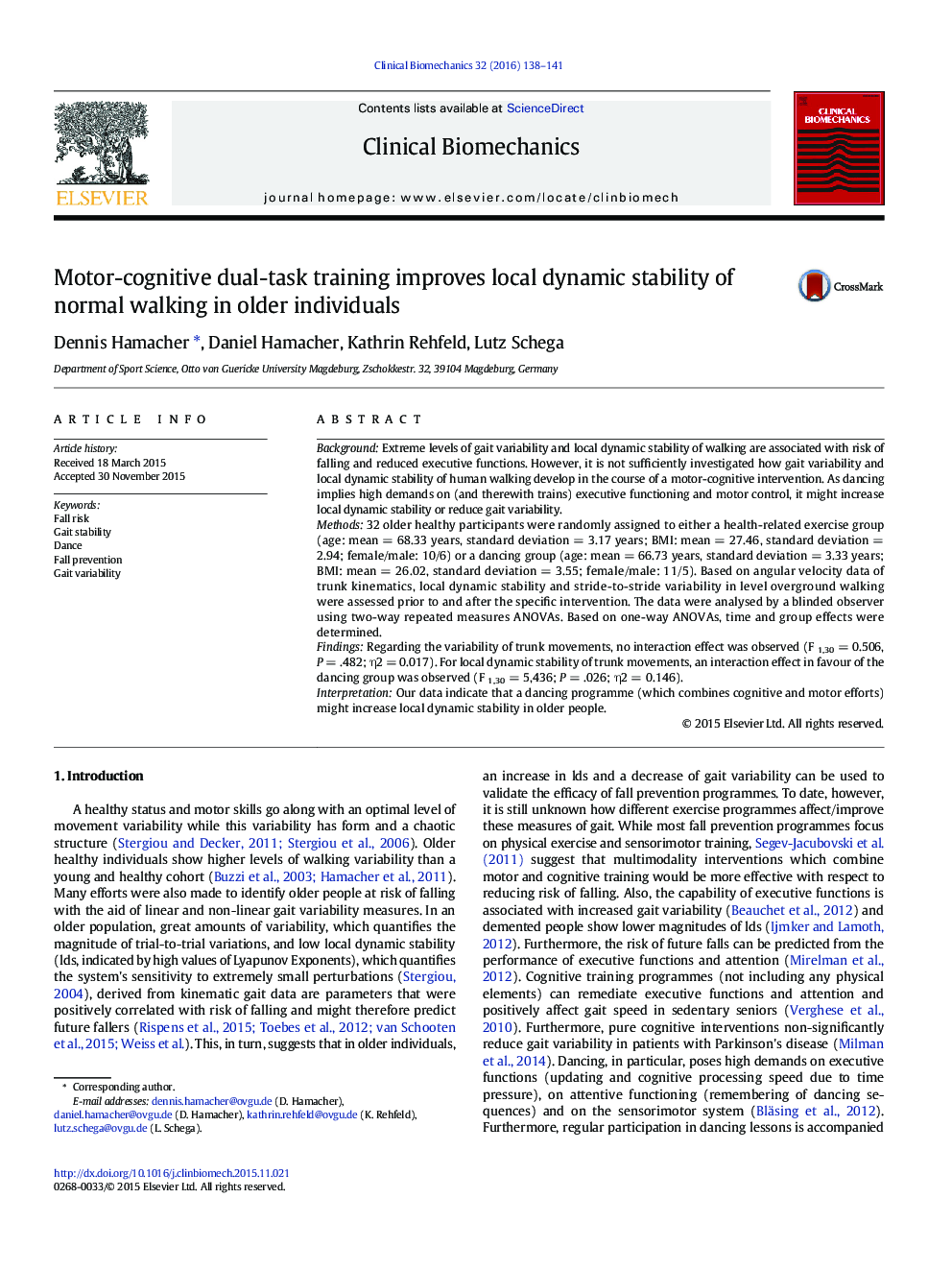| کد مقاله | کد نشریه | سال انتشار | مقاله انگلیسی | نسخه تمام متن |
|---|---|---|---|---|
| 6204621 | 1603746 | 2016 | 4 صفحه PDF | دانلود رایگان |
- Gait stability and gait variability are associated with risk of falling.
- We examined the effect of a dancing programme on gait stability/variability in old individuals.
- A dancing programme enhances gait stability more than conventional exercise.
- A dancing programme does not reduce gait variability.
- Gait stability is able to measure subtle improvements of walking performance.
BackgroundExtreme levels of gait variability and local dynamic stability of walking are associated with risk of falling and reduced executive functions. However, it is not sufficiently investigated how gait variability and local dynamic stability of human walking develop in the course of a motor-cognitive intervention. As dancing implies high demands on (and therewith trains) executive functioning and motor control, it might increase local dynamic stability or reduce gait variability.Methods32 older healthy participants were randomly assigned to either a health-related exercise group (age: mean = 68.33 years, standard deviation = 3.17 years; BMI: mean = 27.46, standard deviation = 2.94; female/male: 10/6) or a dancing group (age: mean = 66.73 years, standard deviation = 3.33 years; BMI: mean = 26.02, standard deviation = 3.55; female/male: 11/5). Based on angular velocity data of trunk kinematics, local dynamic stability and stride-to-stride variability in level overground walking were assessed prior to and after the specific intervention. The data were analysed by a blinded observer using two-way repeated measures ANOVAs. Based on one-way ANOVAs, time and group effects were determined.FindingsRegarding the variability of trunk movements, no interaction effect was observed (F 1,30 = 0.506, P = .482; η2 = 0.017). For local dynamic stability of trunk movements, an interaction effect in favour of the dancing group was observed (F 1,30 = 5,436; P = .026; η2 = 0.146).InterpretationOur data indicate that a dancing programme (which combines cognitive and motor efforts) might increase local dynamic stability in older people.
Journal: Clinical Biomechanics - Volume 32, February 2016, Pages 138-141
